In the realm of fire safety, one tool stands out as a crucial asset for effectively managing liquid fires, the flammable liquid fire extinguisher. Industrial processes and technological advancements are continuing to evolve. But the risk of flammable liquid fires persists. We find ourselves demanding the presence of specialised firefighting equipment capable of combating these volatile situations.
We needed a product designed specifically to tackle the unique challenges posed by fires fueled by flammable liquids. As a result, the flammable liquid fire extinguisher has emerged as an indispensable ally. Given that conventional fire extinguishers prove ineffective and often exacerbate the situation.
When confronted with flammable liquid fires, the flammable liquid fire extinguisher is engineered to address the distinct characteristics of these blazes. For example, gasoline, oil and solvents pose a heightened danger due to their low flashpoints and ability to spread rapidly. In essence, the flammable liquid fire extinguisher is a specialist tool, making it vital for fire safety professionals, industries and individuals alike.
Let’s delve into its composition, operating mechanisms and best practices for deployment. By doing so, we can enhance our understanding of this invaluable firefighting tool.
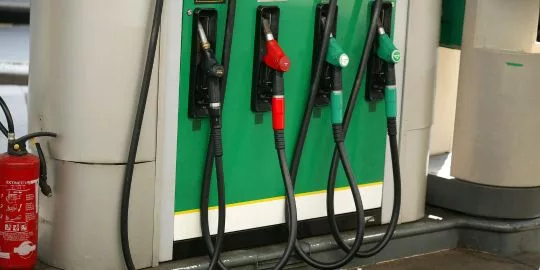
Introduction to Flammable Liquid Fire Extinguishers
Firstly, flammable liquid fire extinguishers are also known as Class B fire extinguishers. Secondly, these fire extinguishers are specifically designed to handle fires involving flammable liquids. For example gasoline, oil, diesel, kerosene, solvents and other similar substances. Flammable liquid fire extinguishers are essential safety devices used to suppress and control fires caused by the ignition of flammable liquids.
In fact, the primary goal of a flammable liquid fire extinguisher is to interrupt the fire triangle. The fire triangle consists of fuel, heat, and oxygen. In brief, the flammable liquid fire extinguisher achieves this by either cooling the fire or removing the oxygen supply. Thus, extinguishing the flames. Lastly, these fire extinguishers are typically filled with a dry chemical powder, foam or carbon dioxide (CO2) to effectively combat flammable liquid fires. These fires can be present in manufacturing, offices, petrol forecourts and more.
As mentioned above, there are three main types of flammable liquid fire extinguishers:
Dry Powder Fire Extinguisher
Dry powder fire extinguishers are filled with dry chemical powders. For example monoammonium phosphate and ammonium sulphate. Secondly, when discharged, the powder forms a blanket over the burning liquid. This separates the flame from the surrounding oxygen, thus, smothering the fire. Dry chemical extinguishers are effective for Class A, Class B and Class C fires.
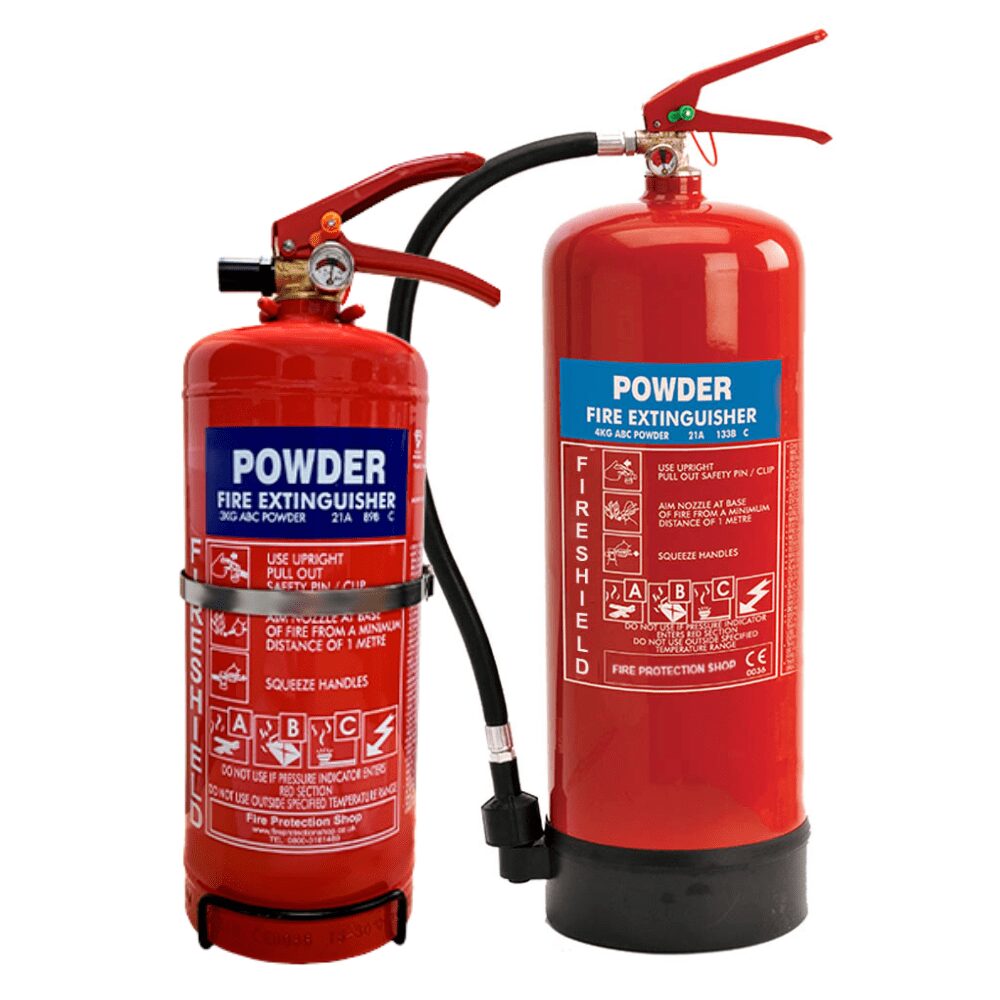
Carbon Dioxide Fire Extinguisher
CO2 extinguishers contain carbon dioxide in a pressurised form. Once activated, the CO2 is released as a cold gas, which displaces the oxygen surrounding the fire. But, by reducing the oxygen concentration, CO2 extinguishers starve the fire of the oxygen it needs to sustain combustion. These extinguishers are ideal for fires involving flammable liquids and electrical fires (Class B and electrical fires).
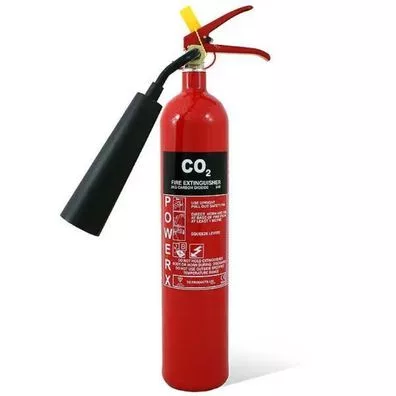
Foam Fire Extinguisher
Foam fire extinguishers, also known as AFFF (Aqueous Film-Forming Foam) extinguishers, are effective for combating fires involving flammable liquids. In fact, these extinguishers work by forming a blanket of foam over the liquid. Thus, separating it from the oxygen and suppressing the fire. The foam also cools the fuel surface, reducing the chances of re-ignition. Foam extinguishers are often used in areas such as garages, workshops and industrial facilities where flammable liquids are present.
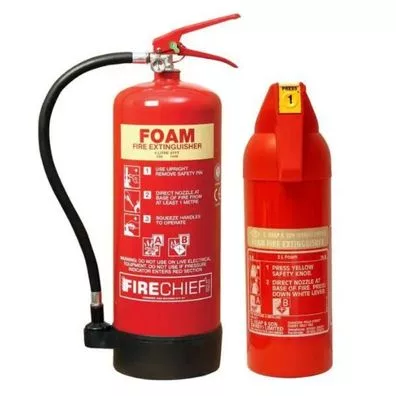
Key Features of Flammable Liquid Fire Extinguishers
Flammable liquid fire extinguishers are specifically designed to extinguish fires involving flammable liquids. For example, gasoline, oil, grease, solvents and other similar substances. Here are some key features of flammable liquid fire extinguishers:
Extinguishing Agent
Flammable liquid fire extinguishers typically use a fire suppression agent that is specifically effective in extinguishing fires fueled by flammable liquids. The most common fire suppression agents used in these extinguishers are dry chemical powders. For example, mono ammonium phosphate, ammonium sulphate or sodium bicarbonate.
Class B Rating
Flammable liquid fire extinguishers are classified with a Class B rating. This indicates their suitability for fighting fires involving flammable liquids. Additionally, this classification ensures that the extinguisher meets the necessary standards and requirements for effectively handling such fires.
Colour Coding
Flammable liquid fire extinguishers are typically colour-coded with a red body. Thus, making them easily identifiable in an emergency situation. This colour helps users quickly locate the appropriate extinguisher when confronted with a fire involving flammable liquids.
- Dry powder fire extinguisher, dark blue label with a red tube.
- Aqueous film forming foam extinguisher, cream label with a red tube.
- CO2 fire extinguishers, black label with a red tube.
Safety Pin and Tamper Seal
To prevent accidental discharge or tampering, flammable liquid fire extinguishers typically feature a safety pin and tamper seal. Essentially, the safety pin prevents the extinguisher from being discharged inadvertently. However, the tamper seal indicates if the extinguisher has been tampered with or used previously.
Mounting Bracket
Many flammable liquid fire extinguishers come with a mounting bracket that allows for secure installation on walls or other designated locations. This ensures that the extinguisher is easily accessible in case of an emergency and reduces the risk of it being misplaced or obstructed.
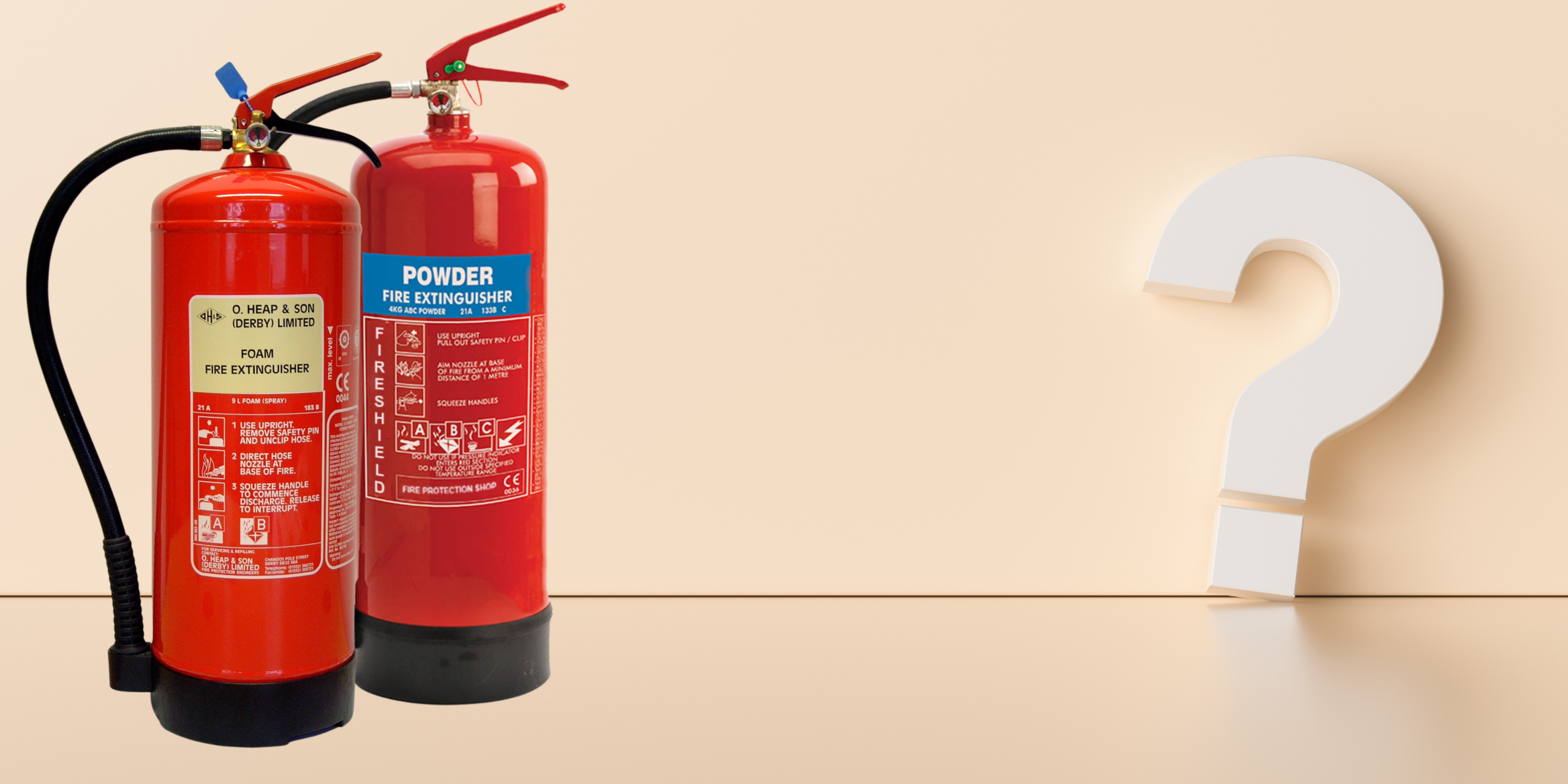
Choosing the Right Flammable Liquid Fire Extinguisher for Your Needs
When it comes to choosing the right flammable liquid fire extinguisher, it’s important to consider your environment. To effectively extinguish a liquid fire, you’ll need a fire extinguisher specifically designed for flammable liquid fires. Here are some key factors to consider:
Common extinguishing agents for flammable liquid fires include
- Foam.
- Dry Powder Chemical.
- Carbon Dioxide (CO2).
Foam Fire Extinguisher
Foam fire extinguishers create a blanket over the fuel, thus, preventing oxygen from reaching the fire. Also, they are effective for both Class A and Class B fires. Foam extinguishers are suitable for areas where flammable liquids are stored or processed, however, they may leave a residue that needs to be cleaned up.
Dry Powder Fire Extinguisher
Dry chemical fire extinguishers use a powdered chemical agent to interrupt the chemical reaction of the fire. In addition, this extinguisher is versatile and can be used on Class A, B and C fires. However, they may create a cloud of dust, which can be a concern in certain environments.
Carbon Dioxide Fire Extinguisher
CO2 fire extinguishers displace oxygen and cool the fire. We often supply these to office spaces as they are suitable for both Class B and electrical fires. However, they are not suitable for Class A fires. CO2 extinguishers are commonly used in areas with sensitive equipment, as they do not leave residue or damage electronics.

Conclusion
In conclusion, the flammable liquid fire extinguisher is an essential tool in fire safety, specifically designed to combat fires fueled by flammable liquids. Its unique composition and operating mechanisms make it an indispensable ally in managing volatile situations. With its ability to interrupt the fire triangle and effectively suppress flames, the flammable liquid fire extinguisher addresses the distinct challenges posed by flammable liquid fires.
There are several types of flammable liquid fire extinguishers available, including dry powder, carbon dioxide, and foam extinguishers. Each type has its own advantages and considerations, and the choice depends on the specific needs and requirements of your environment.
When selecting a flammable liquid fire extinguisher, factors such as the extinguishing agent, size and capacity, location and accessibility, as well as maintenance and training should be taken into account. Compliance with local fire safety regulations and seeking advice from fire safety professionals are crucial to ensure the suitability and effectiveness of the chosen extinguisher.
By understanding the importance of flammable liquid fire extinguishers and making informed choices, we can enhance fire safety measures and effectively manage the risks associated with flammable liquid fires.